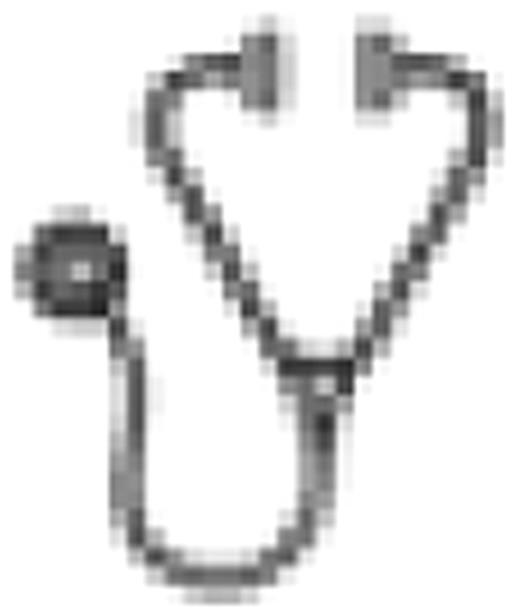Abstract
Abstract 3341
GB virus type C (GBV-C) infection is common with 3–5% rates of viremia in blood donors and a much higher prevalence in HIV infected patients. GBV-C is transmitted by sexual or blood exposure. Although infection may persist, most immune competent individuals clear viremia within 2 years. Few data describe the clinical course of acute GBV-C infection following transfusion in HIV infected patients. We estimated risk of GBV-C RNA acquisition following transfusion.
We used a limited access database from the National Heart Lung and Blood Institute from the Viral Activation Transfusion Study (VATS). A RCT of leukoreduced (LR) vs. non-LR transfusion, VATS collected blood samples from U.S. HIV infected transfusion naïve patients. GBV-C RNA in pre- and post transfusion samples was tested after completion of VATS. GBV-C RNA acquisition up to 120 days post-transfusion was examined in 294 patients who were GBV-C RNA and antibody negative before transfusion. Discrete hazard of GBV-C RNA acquisition as a function of cumulative units transfused was estimated using pooled logistic regression.
GBV-C RNA was detected in 22 (7.5%) of 294 subjects within 120 days following first transfusion. Viremia was detected within the first 30 days in 12 (4.1%) subjects and between 31 and 120 days in 10 (3.4%) subjects. Median (IQR) follow-up duration and total blood units transfused for subjects who acquired GBV-C RNA or stayed negative were: 88.5 (80-108) and 77.5 (32-100) days; and 4 (2-7) and 4 (2-6) units, respectively (Table 1). Discrete hazard of GBV-C RNA acquisition increased with each additional unit transfused (OR=1.09, 95% CI=1.06, 1.11) (Table 2). In pooled logistic regression models, lower baseline HIV viral load and use of antiretroviral therapy (ART) predicted subsequent GBV-C RNA acquisition after controlling for units of blood transfused. Leukoreduction status was not associated with GBV-C transmission.
Subject characteristics by GBV-C acquisition status, VATS (n=294)
| Characteristic . | GBV-C RNA acquisition n=22 . | GBV-C RNA negative n=272 . | p-value . |
|---|---|---|---|
| Follow-up time in days | |||
| Mean (SD) | 85.0 (28.9) | 71.2 (34.4) | 0.06 |
| Median (IQR) | 88.5 (80–108) | 77.5 (32–100) | 0.04 |
| Baseline HIV viral load per ml, log10 | |||
| Mean (SD) | 4.1 (1.4) | 4.7 (1.1) | 0.02 |
| Baseline CD4 cells per uL | |||
| Mean (SD) | 70.5 (86.7) | 55.5 (105.5) | 0.54 |
| Median (IQR) | 30.5 (7.5–95.5) | 14 (3–56) | 0.20 |
| Baseline ART exposure, n (%) | 6 (27.3) | 58 (21.3) | 0.51 |
| Units transfused, mean (SD) | |||
| Mean (SD) | 7.2 (9.3) | 5.2 (4.5) | 0.08 |
| Median (IQR) | 4 (2–7) | 4 (2–6) | 0.59 |
| Characteristic . | GBV-C RNA acquisition n=22 . | GBV-C RNA negative n=272 . | p-value . |
|---|---|---|---|
| Follow-up time in days | |||
| Mean (SD) | 85.0 (28.9) | 71.2 (34.4) | 0.06 |
| Median (IQR) | 88.5 (80–108) | 77.5 (32–100) | 0.04 |
| Baseline HIV viral load per ml, log10 | |||
| Mean (SD) | 4.1 (1.4) | 4.7 (1.1) | 0.02 |
| Baseline CD4 cells per uL | |||
| Mean (SD) | 70.5 (86.7) | 55.5 (105.5) | 0.54 |
| Median (IQR) | 30.5 (7.5–95.5) | 14 (3–56) | 0.20 |
| Baseline ART exposure, n (%) | 6 (27.3) | 58 (21.3) | 0.51 |
| Units transfused, mean (SD) | |||
| Mean (SD) | 7.2 (9.3) | 5.2 (4.5) | 0.08 |
| Median (IQR) | 4 (2–7) | 4 (2–6) | 0.59 |
Odds Ratio (OR) for GBV-C RNA acquisition in HIV infected patients estimated using pooled logistic regression models*, VATS (n=294)
| Variable . | Unadjusted OR (95% CI) . | Adjusted for cumulative units transfused (95% CI) . | Adjusted for ART use† (95% CI) . | Adjusted for HIV viral load‡ (95% CI) . |
|---|---|---|---|---|
| Cumulative units of blood transfused (per unit) | 1.09 (1.06, 1.11) | – | 1.08 (1.05, 1.11) | 1.08 (1.05, 1.11) |
| Baseline HIV viral load (per log10copies/ml) | 0.61 (0.40, 0.92) | 0.62 (0.40, 0.96) | – | – |
| Current use of ART | 4.78 (2.01, 11.3) | 4.03 (1.79, 9.11) | – | – |
| Variable . | Unadjusted OR (95% CI) . | Adjusted for cumulative units transfused (95% CI) . | Adjusted for ART use† (95% CI) . | Adjusted for HIV viral load‡ (95% CI) . |
|---|---|---|---|---|
| Cumulative units of blood transfused (per unit) | 1.09 (1.06, 1.11) | – | 1.08 (1.05, 1.11) | 1.08 (1.05, 1.11) |
| Baseline HIV viral load (per log10copies/ml) | 0.61 (0.40, 0.92) | 0.62 (0.40, 0.96) | – | – |
| Current use of ART | 4.78 (2.01, 11.3) | 4.03 (1.79, 9.11) | – | – |
OR estimates discrete hazard of GBV-C RNA acquisition.
Model is adjusted for time-varying ART use.
Model is adjusted for HIV viral load at baseline (pre-transfusion).
Blood transfusion is associated with significant risk of GBV-C acquisition in HIV infected patients. Establishing evidence for transfusion transmission of GBV-C will allow additional studies on the impact of acute acquisition on the course of HIV infection in co-infected patients.
No relevant conflicts of interest to declare.

This icon denotes an abstract that is clinically relevant.
Author notes
Asterisk with author names denotes non-ASH members.

This feature is available to Subscribers Only
Sign In or Create an Account Close Modal